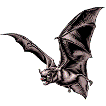Museum, University of Nebraska State

University of Nebraska State Museum: Mammalogy Papers
A Systematic Review of the Olive-Backed Pocket Mouse, Perognathus fasciatus (Rodentia, Heteromyidae)
Document Type
Article
Date of this Version
3-6-1979
Citation
Annals of Carnegie Museum (March 6, 1979) volume 48 (article 5): 73-102.
Abstract
Geographic variation in Perognathus fasciatus Wied and the identities of specimens of P. fasciatus and P. flavescens from areas of potential sympatry were investigated. Populations of P. fasciatus from the northern Great Plains, in areas with the highest amounts of precipitation, were the darkest colored and had proportionately the smallest auditory bullae. Size varied clinally in the Great Plains, with larger mice being found in the cooler, northern latitudes. Populations from the arid intermountain basins of Colorado, Utah, and Wyoming were largest in size, had the longest tails, were the palest in color, and had the largest bullae. Two races of the olive-backed pocket mouse are recognized--P. fasciatus fasciatus Wied, 1839, from the Great Plains, and P. fasciatus callistus Osgood, 1900, from the intermountain basins of Colorado, Utah, and Wyoming.
No evidence was found that would suggest interspecific hybridization between P. fasciatus and P. fiavescens. The two species are divergent in size and proportions and occupy different habitats in the Great Plains. In the Unitah Basin of Utah and Colorado, however, they are convergent structurally and appear to occupy similar habitats, but are not known to be sympatric.


Comments
Copyright 1979, Carnegie Museum of Natural History. Used by permission.